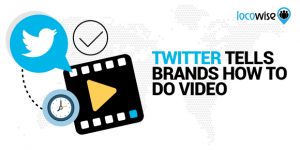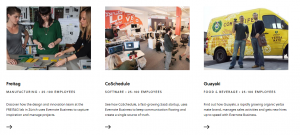Does change make you nervous?
Does change make your stomach turn upside down and bring about anxiety?
Does it keep up you up at night when someone tells you about all the changes happening around marketing and how it will affect your business if you don’t change with it?
What are you supposed to do?
Where will you find the time to learn it all and as important keep up with it after you learn it?
I recently talked with a social media company. Their chief complaint is that some of their clients can’t communicate to them it in a way that is relevant, interesting and inspiring on social media?
They set an appointment with me and one of their clients to see if I could help them.
When I talked with the owners, they admitted they were terrified of discovering their “why?” because it would likely mean some things would need to change in order for them to grow.
Out of fear, they chose to do nothing.
What does that mean for their business tomorrow in a world where change is either causing businesses to thrive or forcing them to close the doors?
Why Don’t We Like Change?
There are two reasons why we don’t like change and both of them apply to our resistance to adapt to the changing world and technology around us.
#1 – Habits
First is because of habits. We are creatures of habits and we’ve love being comfortable. Many will do whatever it takes to maintain the level of comfort we feel we’ve earned.
I once read an interesting experiment on the topic of habits.
One group of participants was given fresh popcorn and another group stale popcorn before watching a movie. People also rated their liking of the popcorn and indicated the strength of their usual habit to eat popcorn in movie theaters. Those with strong habits ended up consuming equal amounts, regardless of how stale or fresh it was, and despite the fact that they disliked the stale popcorn. Non-habitual eaters consumed less of the stale variety.

For some of us, the “way it has always been done” is our popcorn. We love it, we consume it and in the end it just gives us an upset stomach. But, we don’t care because it’s our habit and breaking it is hard to do.
#2 – Feeling Overwhelmed
Do you ever feel overwhelmed by the sheer amount of things you could do or should do in order to be successful?
It’s easy to shut down and do nothing when we are overwhelmed and if we don’t know where to start. Unfortunately, business is not static. It’s either growing or declining.
The more in decline many go, the more overwhelmed they become and the greater the likely hood of failure.
Regardless of whether you are comfortable in your habits or you feel overwhelmed, change is still happening all around you and it is going to impact your business either positively or negatively.
You can choose to avoid it or you can choose to become proactive and do something about it.
It’s all about baby steps.
Change is Constant but There is One Constant That Can Bring Relief
We live in a fast-paced changing world thanks to technology. Just when you catch your breath something new comes out of left field and blindsides you.
Over the years, I think I’ve seen it all, until the next thing.
I can remember in 2005 all one needed was a website to be successful online.
There weren’t hundreds of social media platforms like there is today.
It was just your website, a search engine (Google and Yahoo! predominately) and maybe your email list.
Fast forward, there are easily over 400 social media platforms and growing.
Plus, we’ve been told that we need to have a blog, do video and maybe podcasting as well.
Do a search on Google for “How to grow my business online” and you’ll have more advice coming at you than you know what to do with it all. Some of it will no longer be relevant and most of it is a complete waste of time to read through.
How do you determine what to do and how can you relieve the stress of the constant change that is coming at you?
The one constant that levels the playing field is your message.
Your Messaging is the Constant Difference Maker
We all need that safe place and your message is just that in your business.
Your message is the difference between success and failure in a world of change.
Your message dictates strategy; your changing strategies do not dictate the message.
Ultimately, your message helps you discover your buying audience and leads you to where they are at and helps them find you.
How can I say that?
Because your message is relevant to them.
Take this article as an example.
If you’re still reading, it’s because the message behind this article is twofold:
- It’s relevant to your fear of change but you know you have to.
- You care about your business and you want to succeed in spite of your fear of change.
Your message is the driver of your business.
Your product or service is not the driver of your business.
“What” you do is not initially important to your prospect or customer.
“WHY” you do what you do is what’s important.
Your message is your “why” being put in alignment with your prospects “why.”
Your message is your “why” being put in alignment with your prospects “why.” @donpurdum
Click To Tweet
No matter how much change happens around you, this is the one constant that will help you sleep well at night.
Your message and “why” is what dictates your strategies and allows you to see the opportunities that change can bring about.
Your message takes change and turns it from an anxious pain to a hopeful opportunity!
How to Create Your Message
Your message is the foundation of your business, and anyone who has ever watched a house or building under construction knows the most important part of the construction process is the foundation.
Without a proper foundation, the structure is due to come down at some point. It has no lasting viability.
So how do we create a message?
The questions are simple, getting out of your own way is hard.
Here are the questions:
- What are the problems you’re passionate about solving?
- What are the tangible values your customers experience and how did they feel about the experience?
- What “specific” problems do you solve for each tangible value?
- Who “specifically” do you solve each problem for?
- What business are you “really” in?
A Practical Example

As you can see by the picture above, the long whiteboard is full. That’s just one of two whiteboards and the result of a twelve-hour Marketing Bootcamp with a technology company who was struggling with their message.
They were spending their time networking, in meetings, in proposals, on their website, in their social media, videos, etc., talking about “what” they do.
As a result, sales were hard to come by.
They looked and sounded like all their competitors.
“What” never gets anyone thinking about much of anything.
It’s really nothing more than a list of features and benefits when you condense it all down, and people don’t buy features and benefits.
They buy relevance.
Your customers buy “why?”.
The biggest error I tend to see is overly complicated messaging filled with technical & business jargon.
It’s a natural temptation because you believe it’s important to get your points across.
The question is does the prospect or customer see it the same way?
Do they care?
Or, do they care about their problem, need, want or desire?
The average person does not have remotely enough energy to understand every last feature of your product in excruciating detail.
But, they do have enough energy to have their need met.
This company started by talking about “what and how” when we talked about the problems they are passionate about solving…
- Fragmentation around systems
- Teams not working together
- Thinking beyond existing problems
That sounds good, doesn’t it?
But look what we turned it into. These are the “real” problems they are passionate about solving:
- Apathy – people don’t proactively care until something affects them.
- Disruption of services (utilities, economic, health) that lead to calamity and loss of life.
- Loss of quality of life.
- And more…
When you look at it like this… does it matter initially “what” they do?
“What” never matters initially.
If you deal with “Why” first, they will give you permission to move to “what”, “how”, and “if”.
Your Message is the Constant Growth Strategy in World of Changing Strategies
Strategies will always change as technology presents new opportunities.
But strategy without the foundational message will only lead to chaos, frustration and anxiety when the strategies do not work.
You can rest at night and replace fear with hope.
All it takes is getting a handle on your message.
Like the company in the beginning of the article, you can choose to live in fear and do nothing.
But that’s not really an option if you want success!
You can’t control the changes to technology or where your prospects hang out.
But what you can control is your message and how you attract them and relevantly identify with them.
Want to learn more?
I encourage you to take my free on-demand webinar where I will introduce you to the five questions above on how to build a relevant, compelling and inspiring message that you can leverage and build strategies upon.
Are you ready to start attracting those who are able, willing and ready to buy from you?
Business & Finance Articles on Business 2 Community
(46)









